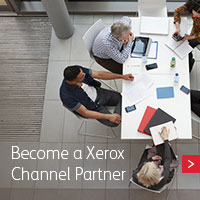Have you noticed that there are two types of customer event?
There are those that are successful. The event is always reasonably busy. Plenty of people register for the event. A high percentage of those people go on to actually attend. Visitors leave the event feeling that it was worthwhile taking the time to attend. The organisers end up with a good list of prospects that are interested in specific services and products.
Then there are those events where nothing is happening. Eager demonstrators are on hand at the stand waiting for someone to drop by. However, most of their day is spent thinking that they would have been better off doing something else.
In reality, most people know that their event is going to struggle long before it actually happens. Few people register their interest. There is little buzz around the event. The pre-event planning revolves around “let’s hope it goes OK”. This is often because their event planning ignores one important rule.
Make sure your event is planned around your customers, not you.
This may seem a strange thing to say. After all, there is no point in planning a customer event if you do not gain the right results from it. You need to have a list of prospects to follow up. You might even make some sales.
However, none of this will happen if you do not make the event for the customer. Your prospects will not attend if they don’t see something in it for them. Some people may come specifically to see a certain piece of equipment. But the majority of attendees will come to an event because they hope to learn something worthwhile for their business. They don’t have a specific reason to attend – unless you give them one.
Here are three ways to make your event more attractive to attendees. The first one is all around the content of the event.
- Mix sales with inspiration.
Ideally, you want to attract decision makers with budgets, not just those who are interested in your technology. If you focus your content purely around machinery, workflow and technical issues you may only attract production staff from your clients. They are often not the decision makers, except in the smallest organisations.
In order to attract decision makers, you should also include business content at your event. This may be ways to cut costs, become more efficient or increase sales. You probably have products that will help your customers do this anyway. However, there can be a big difference in how you present these to prospects.
A presentation about the latest Xerox press will attract the more technically minded prospect. A presentation that demonstrates five new products that can increase sales will attract a different type of audience. So will a presentation about how to cut staff costs through automation. You should include both types of content at your event.

Finally, consider employing an outside speaker from the printing industry. They can often be a draw to potential customers. They may also be able to promote your event to their e-mail list.
However, this content will only help you if use the next strategy as well. - Pre-sell your event.
Many companies send out some e-mail invites and hope for the best. This is not enough. Some events are aimed at specific customers and prospects. In these cases, you should use a mix of e-mail, direct mail, phone calls and SMS. You may also offer an extra resource (such as a white paper) to those who pre-register.
For those events where you want to attract as many people as possible, it is important to use many more channels of communications. You should send a press release of your event to all the industry magazines and websites. You should also use social media. You will find a useful checklist of where to share content on social media here. Read: What’s the Right Light Production Content for Channel Partners to Share on Social Media? – Is your social media driving traffic – or driving prospects away? Here’s how to know whether you’re creating content your audience wants to read.
Read: What’s the Right Light Production Content for Channel Partners to Share on Social Media? – Is your social media driving traffic – or driving prospects away? Here’s how to know whether you’re creating content your audience wants to read.Remember to promote all the different content that you are offering. Share bullet points of the key things that attendees can expect to learn. These can be a very powerful way of encouraging people to attend.
Some people may see the final strategy as a barrier to encouragement. - Timetable your invitations.
You should consider giving people specific times to attend or to have specific demonstrations. There are two advantages to this.
Firstly, the specific times act as an anchor. The attendee is more likely to think of your event as having an appointment at a specific time rather than it being a day when they can drop in when they feel like it. An appointment also makes them feel valued. This means they are more likely to keep their appointment. Secondly, it makes the event seem busy. People are more likely to want to attend an event that feels full.
Some may argue that a specific time may put people off wanting to attend. In reality, if peoples’ plans change on the day they typically ring to try and re-arrange. This gives you an opportunity to make sure that they still attend.
What type of event do these strategies work for?
You can use these strategies at all sorts of events. They work at events that are limited to a specific list of prospects and attendees. You can use them for open events at your showroom. However, they also work very effectively at shows where you have a stand.
Whatever type of event you are creating, make sure you avoid it being a show where nothing is happening. Make sure that you use these strategies to create a successful event.
PS Find out more about how to use social media to promote your event here.
Read 3 Ways to Combine Events and Social Media to Improve Sales – Social media can help you build powerful relationships with customers even before you meet them. Here’s how to use social media to draw visitors to your next event or exhibition.
 Become a Xerox Channel Partner
Become a Xerox Channel Partner
Ready to become a Xerox Channel Partner? Contact your Xerox account manager or review the Xerox Global Partner Program and apply to become a Xerox channel partner today to find out how we will help grow your business.
Join our Xerox Channel Partners LinkedIn Community
Looking for more marketing tips and insights from Xerox Agents, Concessionaires, and Document Technology partners from across the globe? Join our private Xerox Channel Partners LinkedIn Group.
Share this on Twitter!
Tweet: Three tips for running a successful event for your light production customers: https://ctt.ac/tU85r+ via @XeroxPartners
Subscribe to the Channel Partner Connection and receive email updates when we publish a new article.[wysija_form id=”1″]



